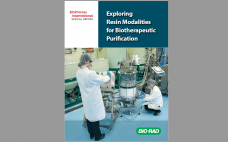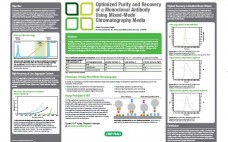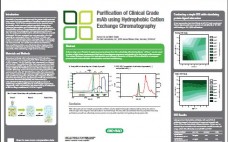New chromatography supports must demonstrate improved selectivity, and bead technologies must be optimized for high binding capacity and product recovery. Drug manufacturers also need access to expertise and continued support from chromatography suppliers that can assist with method development and design of experiments (DoE) assessments. Working together, these industry groups can accelerate method development, increase process yield, reduce buffer consumption, minimize the number of unit operations, and improve overall process economies. Learn more in this Special Report about how resin…
Author Archives: Xuemei He
A Scalable Immobilized Metal Affinity Chromatography Resin for Process Purification
Downstream process purification of proteins requires a resin with optimized bead size for ideal pressure/flow properties and decent dynamic binding capacity (DBC) that provides production efficiencies and good process economics. Our newly developed metal chelate affinity resin — Nuvia™ IMAC — provides the mechanical strength, pore structures, ligand density, and particle size distribution required for an operation run at 300 cm/hr with a DBC of > 40 mg/ml at < 2 bar column backpressure. Protein purification can efficiently be scaled…
Optimized Purity and Recovery of a Monoclonal Antibody Using Mixed-Mode Chromatography Media
Purity, recovery, and elution volume are important factors and parameters when screening multiple media (resins) for the development of efficient, robust, and economical production processes. Among a selection of mixed-mode media evaluated for the purification of MAb S, CHTâ„¢ Ceramic Hydroxyapatite provided the best monomer recovery at 83% in the smallest elution volume with a target purity of 99.5%. Using a bind and elute strategy provided enhanced purification power compared to flow-through modes.
Purification of Clinical Grade MAb using Hydrophobic Cation Exchange Chromatography Resin
A three-step non-rProtein A capture process shows how the selectivity afforded by Nuvia cPrime resin can be used to clear a light chain contaminant that has a homologous sequence and similar pI to the target MAb monomer. The unique balance between the hydrophobic and charged character of Nuvia cPrime allows for a compact process with reduced buffer consumption and feed conditioning.
Nuviaâ„¢ S Media
Increased productivity and reduced costs continue to be the driving forces in process development. Recent advances in upstream processes have dramatically improved the productivity of cell culture fermentation. However, prolonged fermentation and high concentration of monoclonal antibodies (MAbs) at harvest may also lead to product degradation and/or aggregation. Clearing these unwanted by-products remains one of the main challenges in downstream processing of therapeutic MAbs. Media with high binding capacity for target molecules and significant resolution…




